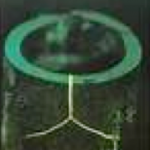NDT TESTING SERVICES
Fluorescent Penetrant Inspection (FPI) is a type of dye penetrant testing inspection in which a fluorescent dye is applied to the surface of a non-porous material in order to detect defects that may compromise the integrity or quality of the part in question. Noted for its simple process, FPI is used widely in a variety of industries.
There are many types of dye used in penetrant inspections. FPI operations use a dye much more sensitive to smaller flaws than penetrants used in other DPI procedures. This is because of the nature of the fluorescent penetrant that is applied. With its brilliant yellow glow caused by its reaction with ultraviolet radiation, FPI dye sharply contrasts with the dark background. A vivid reference to even minute flaws is easily observed by a skilled inspector.
Because of its sensitivity to such small defects, FPI is ideal for most metals which tend to have small, tight pores and smooth surfaces. Defects can vary but are typically tiny cracks caused by processes used to shape and form the metal. It is not unusual for a part to be inspected several times before it is finished.
Selection of inspection type is, of course, largely based on the material in question. FPI is a non-destructive inspection process which means that the part is not in any way damaged by the test process. Thus, it is of great importance that a dye and process are selected that ensure the part is not subjected to anything that may cause damage or staining.






